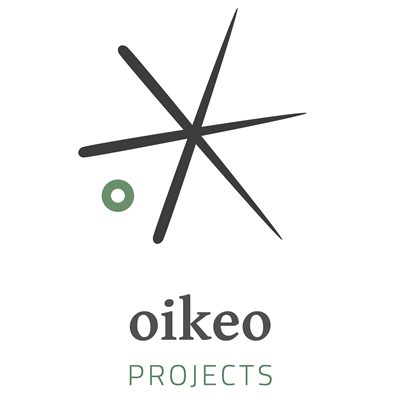

18.06.2013
Nicht ohne Grund heisst das Meer hier Golf von Oman. Die See hat in den zwei Städten Muscat und Sur einen tragenden Rolle: Ist Muscat heute der wichtigste Hafen des Landes werden in der kleinen Küstenstadt Sur noch heute wie vor hundert Jahren wunderschöne hochseetaugliche Segelschiffe aus Holz gebaut.
In Muscat, der Hauptstadt des Omans, liegen Tradition und Moderne nahe bei einander. Wir haben wieder einmal das unglaublich grosse Glück durch Couchsurfing unseren neuen Freund Ram kennen zu lernen. Wir dürfen in seinem Zuhause unsere Rastas wieder in Ordnung bringen - so nach drei Tage Camping in der Wüste sind wir doch froh, mal wieder eine anständige Dusche zu haben. Ram macht sich eine Freude daraus uns seine Stadt zeigen zu dürfen. So legen wir bereits am Tag darauf los und spazieren an der Promenade entlang in Richtung Souq, wie die arabischen Markthallen genannt werden. Die gewieften Händler verkaufen hier jede Menge Krimskrams. Im angrenzenden wunderschönen traditionellen Gebäude schauen wir uns die in einem Museum zusammengefassten traditionellen Haushaltsgegenstände an. Innerhalb eines halben Jahrhunderts hat sich hier das Leben komplett verändert. Zwar noch immer ein Sultanat und von einem alleinigen Herrscher regiert, verfolgt dieser doch einen Reformkurs und hat sein Land mit Hilfe der Ölgeldern zum Florieren gebracht. Dies zeigt sich im neuen Stadtteil eindrücklich: Moderne Autobanen verbinden die Bezirke, grosse Shoppingmalls und Restaurants sind allgegenwärtig und natürlich fährt auch hier jeder ein möglichst grosses Auto. Im alten Stadtteil sind die Gassen eng, die Häuser simpel und das Leben scheint ein Stück langsamer zu ticken.
Nicht zu trennen mit dem Land ist die Religion. Allgegenwärtig sind die Moscheen mit den Minaretten über welche der Muezzin zum Gebet aufruft. Die grösste Moschee des Landes, treffenderweise „Grand Mosque“ genannt ist ein wunderschönes Beispiel von einer gelungenen Symbiose zwischen neuer und traditioneller Architektur. In der Haupthalle befindet sich der grösste Perserteppich der Welt: Mit 60 auf 70m bedeckt der wunderschön verzierte Teppich den Boden der Hauptgebetshalle.
Zusammen mit Ram machen wir auch eine Schnorchel-Tour und sehen unterwegs nochmals eine noch grössere Schule von Delfinen. Drei wunderschöne Tage verbringen wir in Muscat bis wir uns von unserem neuen Freund verabschieden und uns entlang der Küste in Richtung Sur aufmachen.
Unterwegs machen wir Mittagspause im Wadi Tiwi, eine wunderschöne Flussoase mitten im schroffen Gebirge. Im Schatten eines Busches zu sitzen und sich von Zeit zu Zeit im kühlen Nass erquicken zu können gehören eindeutig zu der schöneren Seite der Wüste.
Sur ist eine kleine verschlafene Küstenstadt im omanischen Golf. Einst eine grosses Handelszentrum und sicherer Hafen durch die natürliche Lagune, ist in der Stadt heute nur noch wenig los. Umso charmanter sind die von der Wüstensonne gezeichneten weissen Häuser, der Leuchtturm der den Eingang zum alten Hafen weist und die zwei Forts die diese einst wichtige Stadt von Beduinenstämmen beschützen sollten. Ein traditionelles Handwerk wird hier nach wie vor gepflegt: Mit grosser Sorgfalt werden hier Dows, hochseetaugliche Holzboote, gebaut. Nach wie vor wird das meiste in Handarbeit gemacht und jedes Boot wird durch die filigranen Verzierungen ein Kunstwerk.
Morgen verlassen wir die Küstenregion und werden unseren nächsten Halt in der Oasenstadt Nizwa machen.
It is not without reason that the sea is called the Gulf of Oman here. The sea plays a key role in the two cities of Muscat and Sur: Muscat is the most important port in the country today, and in the small coastal town of Sur, beautiful wooden sailing ships are still built like 100 years ago.
In Muscat, the capital of Oman, tradition and modernity are close together. Once again we are incredibly lucky to get to know a new friend Ram through couch surfing. After three days of camping in the desert, we're glad to take a decent shower. Ram takes it on himself to show us his city. So we get started the next day and walk along the promenade towards the Souq, as the Arab market halls are called. The shrewd dealers sell a lot of odds and ends here. In the adjoining beautiful traditional building we look at the traditional household items that are grouped together in a museum. Life here has changed completely within half a century. Although still a sultanate and ruled by a single ruler, the latter is pursuing a reform course and has made his country flourish with the help of the oil money. This is impressively evident in the new district: modern motorways connect the districts, large shopping malls and restaurants are omnipresent and of course everyone drives the largest possible car here. In the old part of the city the alleys are narrow, the houses are simple and life seems to pace a little slower.
Religion is inseparable from the country. The mosques with the minarets over which the muezzin calls to prayer are omnipresent. The largest mosque in the country, aptly named "Grand Mosque", is a wonderful example of a successful symbiosis between new and traditional architecture. The largest Persian carpet in the world is located in the main hall: At 60 by 70m, the beautifully decorated carpet covers the floor of the main prayer hall.
Together with Ram we also do a snorkeling tour and see an even larger school of dolphins on the way. We spend three wonderful days in Muscat until we say goodbye to our new friend and set off along the coast towards Sur.
On the way we stop for lunch in Wadi Tiwi, a beautiful river oasis in the middle of the rugged mountains. Sitting in the shade of a bush and being able to refresh ourselves from time to time in the cool water is definitely one of the nicer side of the desert.
Sur is a small sleepy coastal town in the Omani Gulf. Once a large trading center and safe haven thanks to the natural lagoon, there is little going on in the city today. All the more charming are the white houses drawn by the desert sun, the lighthouse that shows the entrance to the old port and the two forts that were supposed to protect this once important city of Bedouin tribes. A traditional craft is still cultivated here: Dows, wooden boats suitable for the sea, are built here with great care. As before, most of it is done by hand and the filigree decorations make each boat a work of art.
Tomorrow we will leave the coastal region and will make our next stop in the oasis city of Nizwa.


